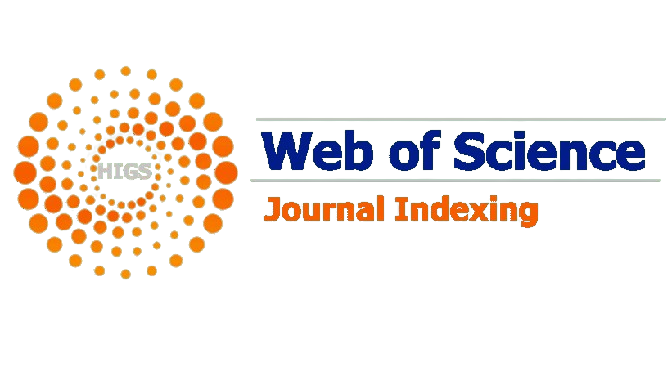CORRELATION OF KNOWLEDGE LEVEL OF PROSPECTIVE CIVIL SERVANTS TO THE COMMUNICATION OF THE DIFFUSION OF INNOVATIONS WITH THE BLENDED LEARNING METHOD IN TANAH LAUT DISTRICT
Abstract
Keywords
Full Text:
PDFReferences
Abuddin Nata. “Perspektif Islam tentang Strategi Pembelajaran”. Kencana: Jakarta, 85 2009.
Andi Ibrahim et.al.“Metodologi Penelitian Cetakan I”.Gunadarma Ilmu: Makassar, h.66 2018.
Cepi Riyana. Produksi Bahan Pembelajaran Berbasis Online.Bandung: CV Wacana Prima, h. 15 2018.
Dani Vardiansyah. “Filsafat Ilmu Komunikasi Suatu Pengantar, Cetakan II”. Jakarta: PT. Indeks, h. 25-26 2008.
Deddy Mulyana. “Ilmu Komunikasi: Suatu Pengantar”. Bandung: Remaja Rosdakarya, 68 2013.
Dr. Dhian TyasUntari. “Metodologi Penelitian: Penelitian Kontemporer Bidang Ekonomi dan Bisnis”. CV. Pena Persada, h. 33 2018.
E. M., Rogers & Shoemaker, F. F.. “Communication of Innovations: A Cross-Cultural Approach”.2d ed. New York: Free Press 1971.
Evelin Siregar & Hartini Nara.“Teori Belajar dan Pembelajaran”.Ghalia Indonesia: Bogor, 14 2010.
Graham C.R.. “Blended learning Systems: Definition, Current Trends, and Future Directions. The Handbook of Blended learning: Global Perspectives, Local Designs”. San Fran-cisco, Pfeiffer Publ., pp. 3–21 2006.
Hamzah B. Uno dan Nina Lamatenggo. “Teknologi Komunikasi dan Informasi Pembelajaran”,Jakarta: PT Bumi Aksara, cet, 2 2011
Imam Ghozali. “Aplikasi Analisis Multivariat dengan Program IBM SPSS. Edisi 7.” Semarang: Penerbit Universitas Diponegoro, 2013.
Kementrian Pendidikan dan Kebudayaan.“Materi Pendukung Literasi Digital”. Jakarta, h. 218-259 2017.
LAN RI.“Uji Publik Desain Latsar CPNSBlended learning”. Pusat Pembinaan Program dan Kebijakan Pengembangan Kompetensi ASN LAN RI 2020.
Lantip Diat Prasojo dan Riyanto.“Teknologi Informasi Pendidikan”.Yogyakarta: Gava Media 2011.
Munir. “Pembelajaran Jarak Jauh Berbasis Teknologi Informasi dan Komunikasi”.Bandung: Alfabeta 2009.
Munir. “Pembelajaran Jarak Jauh Berbasis Teknologi Informasi dan Komunikasi”. Alfabeta: Bandung, h.31. 2009
Muri Yusuf. “Metode Penelitian Kuantitatif, Kualitatif & Penelitian Gabungan Cetakan III”.Kencana: Jakarta, h.32. 2006.
Onong Uchjana Effendy (1993). “Ilmu Komunikasi: Teori dan Praktek”. Bandung: Remaja Rosdakarya Offset, h.9 1993.
Schiffman, L.G., & Kanuk, L.L. “Consumer Behaviour (10th ed)”.New Jersey, Pearson Prentice Hall, h. 23 2010.
Sekretariat Jenderal Kementrian Pendidikan dan Kebudayaan. “Pedoman Penyelenggaraan Penguatan Kompetensi Teknis Bidang Tugas Pelatihan Dasar Calon Pegawai Negeri Sipil di Lingkungan Kementrian Pendidikan dan Kebudayaan”.Jakarta 2020.
Soekartawi.“Agroindustri: Dalam Perspektif Sosial Ekonomi”.Jakarta : PT Raja Grafindo Persada 2005.
Sudarwan Danim. “Metode Penelitian Untuk Ilmu-Ilmu Perilaku”.Bumi Aksara: Jakarta, h. 51. 2004.
Abdi Mirzaqon T& Dr. Budi Purwoko, S. Pd, M. Pd. “Studi Kepustakaan Mengenai Landasan Teori dan Praktik Konseling Expressive Writing”.Bimbingan dan Konseling, Fakultas Ilmu Pendidikan, Universitas Negeri Surabaya 2018.
Ade Dwi Nurrizqi dan Rhoni Rodin. “Tingkat Literasi Digital Mahasiswa Jurusan Ilmu Perpustakaan dalam Pemanfaatan E-Resources UIN Raden Fatah Palembang”. Pustakaloka: Jurnal Kajian Informasi dan Perpustakaan Volume 12, No. 1, h. 80 2020.
Ahmad. “Tahapan Seleksi CPNS dan Hal-Hal yang Harus dipersiapkan”,diakses melalui https://www.gramedia.com/best-seller/tahapan-seleksi-cpns/[diakses 22 Januari 2022 jam 15:27 WITA] 2021.
Alasfor, K. “Social Media Adoption Among University Instructors In Saudi Arabia”, h. 13-20 2016.
Arif Efendy, SH, MM. “Penerapan Model Blended learning pada Pelatihan Dasar CPNS Provinsi Jawa Tengah (Application of the Blended learning Model Basic Training of CPNS Java Province).” Widyaiswara BPSDMD Provinsi Jawa Tengah.2021
Arif Jati Atmaja. “Studi Minat dan Hasil Belajar Antara Metode Klasikal Powerpoint dengan Metode Berbantu Media Flash pada Siswa Kelas VIII SMPN 2 Boja”. Skripsi-Universitas Negeri Semarang, h. 9 2015.
Bambang Warsita. “Landasan Teori dan Teknologi Informasi dalam Pengembangan Teknologi Pembelajaran”.Jurnal Teknodik Vol. XC, Nomor 1, h. 84 2011.
DOI: http://dx.doi.org/10.20527/js.v11i2.14575
Article Metrics
Abstract view : 196 timesPDF - 134 times
Refbacks
- There are currently no refbacks.

This work is licensed under a Creative Commons Attribution 4.0 International License.
Has been indexed and abstracted by:























